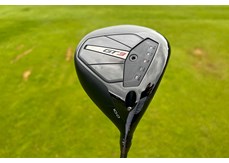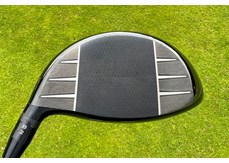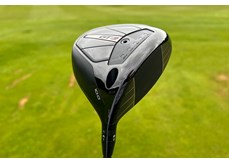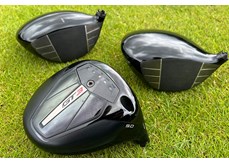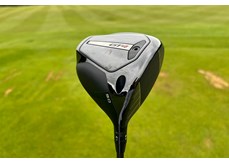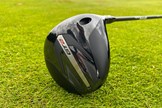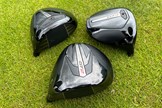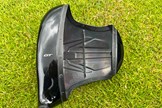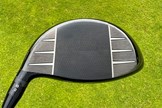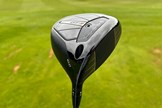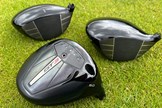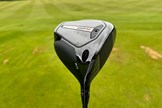Autopilot from the tee box? The Titleist GT2 Driver Review
Last updated:
-
At a glance
- TG Rating
- Owner Rating
-
Pros
- New face technology means distance is increased over TSR2
- Clean looks that fall more in with GT3 and GT4
- Simple weight system keeps fitting easy
-
Cons
- Can spin more in faster players' hands
What we say...
Titleist have set the GT2 driver a lofty goal. With redesigned tech and a new material involved, can GT2 improve on the phenomenal TSR2?
Titleist’s reputation over the previous few generations of drivers has gone from strength to strength.
Before the TS driver series, the company hadn’t been the first name mentioned in driver technology. Indeed, during the launch of TS, Titleist talked about being able to win over the modern golfer during a first hit. Noted within the company’s club design higher-ups, in a fitting you cannot lose the initial battle for ball speed.
“Where I think we got in trouble is, if you look at the path to purchase, we were at the end point. That point in the middle, where guys grab three or four products and go into a hitting bay, we were not as competitive in some of those scenarios as we should have been, and so we got set to the side early.”
This quote from Josh Talge, Titleist’s VP of Golf Club Marketing, has been something of a marker in the ground for the company.
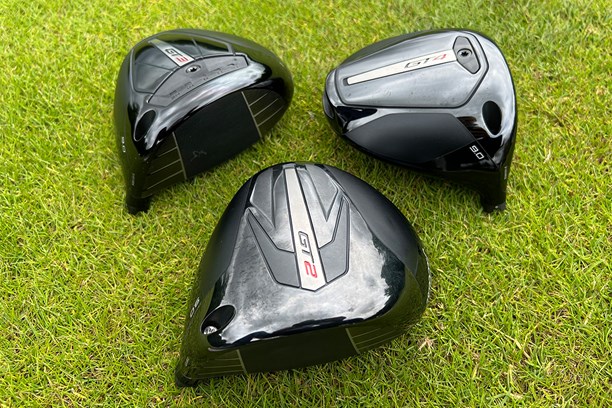
Where we started
With the TS – or ‘Titleist Speed’ – models, Titleist decided to adjust their approach according to the market’s terms by moving to a more sellable, distance-first process, while maintaining the deep custom-fitting options they’ve been known for.
This new style has paid off huge dividends for the company with the TS woods, saw even more success with TSi, and hit what seemed to be the apex of the journey in the TSR family.
TSR has been one of Titleist’s most successful club releases ever, at both the consumer level and with tour take-up. Whether it would even be possible to beat this product with the next generation of woods seemed like an engineer’s nightmare, having for all intents and purposes seen TSR maximize the technologies that the TS drivers began the journey for speed with.
So, with the release of the new GT2 driver, we look at how Titleist has broken its own limits and why this new driver could be another true innovation for the brand.
More speed, with forgiveness
Best for Forgiveness
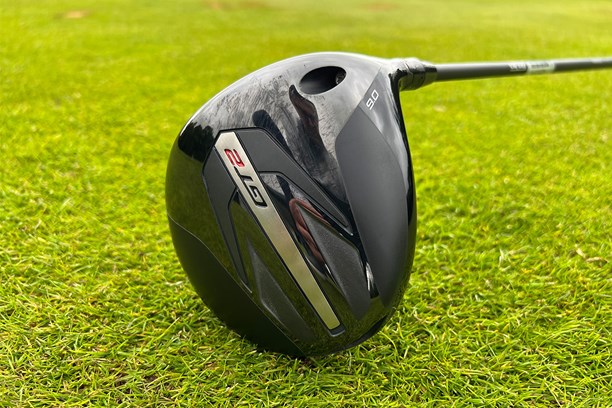

Pros
- New face technology means distance is increased over TSR2
- Clean looks that fall more in with GT3 and GT4
- Simple weight system keeps fitting easy
Cons
- Can spin more in faster players' hands
| Lofts: | 8º / 9º / 10º / 11º (RH/LH) |
| Shafts: | Project X Denali Red, Mitsubishi Tensei 1K Blue, Project X HZRDUS Black 5th Gen, Mitsubishi Tensei 1K Black + Premium Upcharge Graphite Design Tour AD-VF, Tour AD-DI, and Tour AD-UB |
| Grip: | Titleist Universal 360 Grip |
| Weight Options: | 3g / 5g / 7g / 9g (Standard) / 11g / 13g / 15g |
- Proprietary Matrix Polymer material
- Thermoform Process Crown
- Split Mass Internal Technology
- Improved Aerodynamics
- Enhanced SpeedRing VFT
- Tour-Inspired Graphics
Shape and sound
The first thing I noticed with the new GT2 is that it’s not a TSR2. This isn’t meant as the fatuous comment it might appear to be; what I mean is that GT2 sits differently versus TSR. With every driver I can remember from Titleist, from 913 through to TS and TSR, the ‘2’ model has always had a more stretched-out look. The rear of the driver was pulled back in an effort to help increase forgiveness from the natural shape produced, moving the weight with it.
GT2 isn’t, at least in appearance, that. When it was handed to me by my Titleist fitter I assumed he’d handed me the GT3 after our discussion about my preference for a smaller head. More compressed than before, the GT2 emulates the shape of TSi3 and TSR3 although still with the slightly shallower, wider face that players have come to expect.
I love this change from TSR to GT. I was told this was done due to the new internal technologies allowing for a more aerodynamic shape, reducing drag, and helping to increase clubhead speed.
While having stronger separation from each head design can make it easier to tell which model is which, most golfers that I encounter talk about wanting to use ‘better player’ drivers because of the looks at address. Having the GT2 and GT3 look closer together means the performance of the club is what takes priority rather than trying to force yourself into a head that doesn’t suit your needs.
While I found the shape interesting, what really grabbed my attention was the noise of the GT2. This is true across the range of GT drivers but, as I’d started with GT2, it’s what stays in the front of my mind from my original testing.
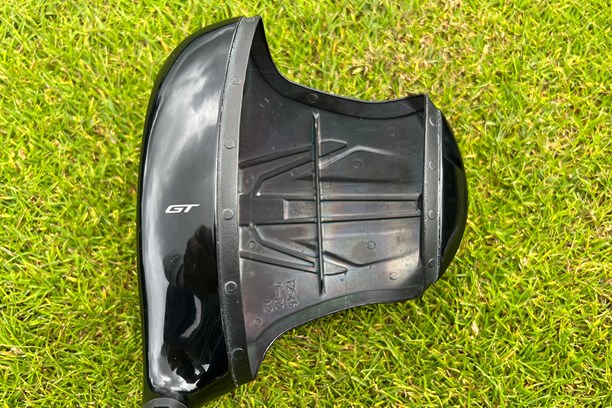
By no means is this the dull thump of a carbon fiber crown, but it isn’t quite the classic acoustics I expect from Titleist either. It’s not far away from the metallic noise that normally accompanies a struck Titleist driver but there’s something behind it. What it certainly isn’t is bad. Given another three balls and the aural change had become normal to me, the deeper sound almost seemed to hang in the air longer, just like the golf ball that quickly followed it.
So what caused this subtle change? This is where the new technology begins to show itself.
The Tech
Carbon fiber construction has been resisted by Titleist in their woods for several years now. The company has argued that any weight saved from the use of carbon automatically becomes redundant when the epoxy holding the composite pieces together is applied, but the noise produced has been a fundamental sticking point for their players as well.
To justify any material change, Titleist had to work around these two problems. With its new PMP technology, the Acushnet-owned brand feels it has achieved just that.
PMP (Proprietary Matrix Polymer) is a new kind of structure that Titleist say is entirely unique to them. In fact, they guarantee that no one else is or will be using it any time soon. This is because PMP is a Titleist creation, developed fully in-house by their engineering team, and therefore exclusive to their products.
Extremely lightweight, this is a carbon-based crown material that not only allows for the coveted movement of mass but also carries the acoustics of metal. Titleist are rightly proud of this innovation. Combining preferential sound (which we know most golfers equate with feel) as well as lowering center of gravity from the weight reduction means this is a best-of-both-worlds scenario for Titleist.
Wrapping the new PMP crown around the sole using a thermoforming process, wherein heat is used to bend the material into a specific shape, has even allowed the placement of the glue holding the crown in place to be better used to bring weight lower in the head.
This new crown is also hand-finished before paint is applied to ensure a smooth one-piece look at address like previous all-metal lines. You’ll find no connection lines across the top of the crown from Titleist, like those seen on the Callaway Ai Smoke for instance.
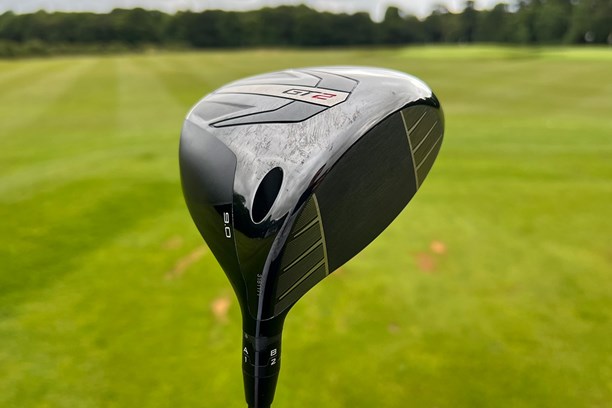
Going briefly back to the visuals, Titleist has also improved the face graphics over TSR2, with stronger, more defined white vertical lines helping you align to the ball and the target. For me, I’ve not been able to notice much difference between GT and TSR in this regard but I don’t think that’s a bad thing. Face graphics have never been a main concern so it’s a nice bit of knowledge to know that Titleist has considered that detail but I’m not really looking at that anyway.
Performance
The final aspect of Titleist’s improvements has been in the face design and this is where GT2 shines. Last Gen, TSR2 and 3 had different face designs. TSR3 had a faster SpeedRing VFT that promoted ball speed but wasn’t as great on mishits. TSR2 used a Multi-Plateau Variable Face Tech for improved forgiveness from off-center strikes but not as much from the middle.
With GT2, an improved SpeedRing VFT has been introduced to increase ball speed across the whole face and it certainly feels like it. The ball speed differences with GT2 and 3 are far less than the TSR2/3 variations but still with a feeling of extra security that you can get away with the shots that aren’t perfect.
If you’d asked me to pick a model during the fitting that I most liked, GT2 would be the first name I’d write down. The help on offer is great, it’s easy to square the face regardless of setup, and the ball speed is within touching distance of the GT3 and GT4.
The only reason this driver isn’t currently in my bag is spin. The consistency of spin was impressive to see, and we even managed to hit a few drivers off the deck because of the help and predictability on offer. But for a high-spin player, the GT2 didn’t quite offer enough of a reduction for me as GT3 could.
Final thoughts
Normally, I’d say that if you own last year’s product, this isn’t being advertised for you. As much as manufacturers can receive negativity for annual (or every two years, in the case of Titleist) releases, if you’ve bought a product in the last three years they aren’t trying to get you to spend again.
However, and this is a rarity for anything let alone golf clubs, I would say the new GT2 from Titleist is absolutely worth taking the time to test even if you are bringing a TSR2 along for the appointment. Everything about this driver has impressed me, from technology to looks to total performance, and I’d be eager to put it into many a golfer’s hands.
About the author

Lewis Daff
Lewis Daff joined the Today’s Golfer digital team in 2024, having spent more than a decade in both big box golf retail and independent stores, working as a club fitter and builder.
Experienced with every level of golfer, from beginner to professional, he has achieved Master Fitter and Builder status with most major manufacturers, including Mizuno, Taylormade, and Callaway, helping him to cement both a wide and deep knowledge base. Lewis specializes in Clubs, Shafts, Training Aids, Launch Monitors and Grips.
In Lewis’ bag is Titleist GT3 Driver (9º) with Fujikura Ventus Black, Titleist GT2 Fairway Wood (15º), Wilson Staff D9 Forged 3-iron, Srixon ZX7 MKii Irons (4-PW), Titleist SM9 Wedges (52º, 60º), Toulon San Diego Putter, and Callaway Chrome Tour Ball.
Talk to Lewis about why steel shafts are now dead and graphite is the only way forward or any other equipment you’d like to debate via his email.
Product Information
Titleist GT2 Driver
RRP: $649.00 / £579.00 + $849.00 / £749.00 (Premium)
Lofts: 8° / 9° / 10° / 11º (RH/LH)
Head Size: 460cc
Lie: 58.5°
Standard Shaft Length: 45.5”
Stock Shaft Options: Project X Denali Red / Mitsubishi Tensei 1K Blue / Project X HZRDUS Black 5th Gen / Mitsubishi Tensei 1K Black
Premium Upcharge Shafts: Graphite Design Tour AD-VF / Tour AD-DI / Tour AD-UB
Stock Grip: Titleist Universal 360 Grip


